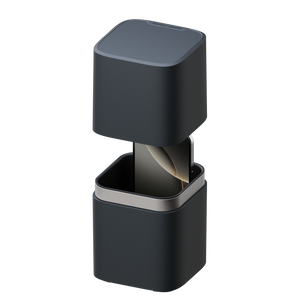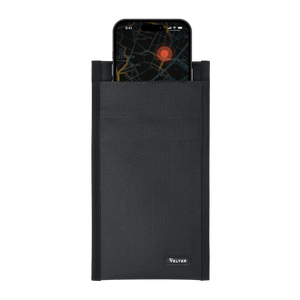What is SAR and How to Protect Yourself from Phone Radiation
The widespread use of smartphones has raised concerns about the potential health risks associated with electromagnetic radiation emitted by these devices. Specific Absorption Rate (SAR) is a measure of the rate at which energy is absorbed by the human body when exposed to a radio frequency (RF) electromagnetic field. In this article, we will discuss SAR ratings, the dangers of cell phone radiation, and how Velter products can help you protect yourself and your loved ones from these harmful effects.

SAR Ratings and Cell Phone Radiation
SAR ratings are a crucial parameter that smartphone manufacturers must consider when designing their products. The SAR value is expressed in watts per kilogram (W/kg) and is used to determine the amount of radiation absorbed by the human body. The higher the SAR rating, the more radiation is absorbed by the body, potentially leading to adverse health effects.
The Dangers of Electromagnetic Radiation
Electromagnetic radiation is a type of energy that is emitted by electronic devices, including smartphones. Prolonged exposure to high levels of electromagnetic radiation can have negative health effects. For example, the World Health Organization (WHO) has classified radiofrequency electromagnetic fields as possibly carcinogenic to humans.
Discrepancies in SAR Measurements
In some cases, independent experts have discovered discrepancies between the declared SAR values and the actual levels of radiation emitted by smartphones.
During the testing, smartphones with activated radio communication functions at the corresponding frequencies (1500/1600/1750 MHz) were attached under containers with a solution, after which measurements were taken. The testing conditions were as close as possible to FCC standards and simulated real-world usage of the gadgets – at 2, 5, 10, or 15 mm from the human body, mimicking the position of the device in a jeans pocket or near the ear during a conversation.
The experiment showed that the majority of popular smartphone models significantly exceeded the stated indicators. These findings raise questions about the accuracy of SAR measurements and the transparency of smartphone manufacturers.
What Can Be Done to Protect Yourself from Radiation?
- Choose a smartphone with a low SAR value: When purchasing a new smartphone, pay attention to its SAR rating. Opt for devices with the lowest possible SAR values.
- Use a headset or speakerphone: Using a headset or speakerphone can significantly reduce the amount of radiation absorbed by the head.
- Keep your phone at a distance: Avoid carrying your smartphone close to your body, such as in your pocket, to minimize exposure to radiation.
- Limit the duration of phone calls: Long phone calls can increase your exposure to radiation. It is better to send a text message or use other forms of communication instead of a phone call.
- Use radiation-reducing accessories: The smartphone radiation reduction bag cuts the phone's radiation towards the body in half, without disconnecting it from the network. The bag can also be complemented with patented Faraday case for complete blocking of the phone's radio signals.
While smartphones offer numerous benefits, it is essential to be aware of the potential risks associated with electromagnetic radiation. By taking the necessary precautions and using radiation-reducing accessories, you can minimize your exposure to harmful radiation and protect your health.
05.05.2023

